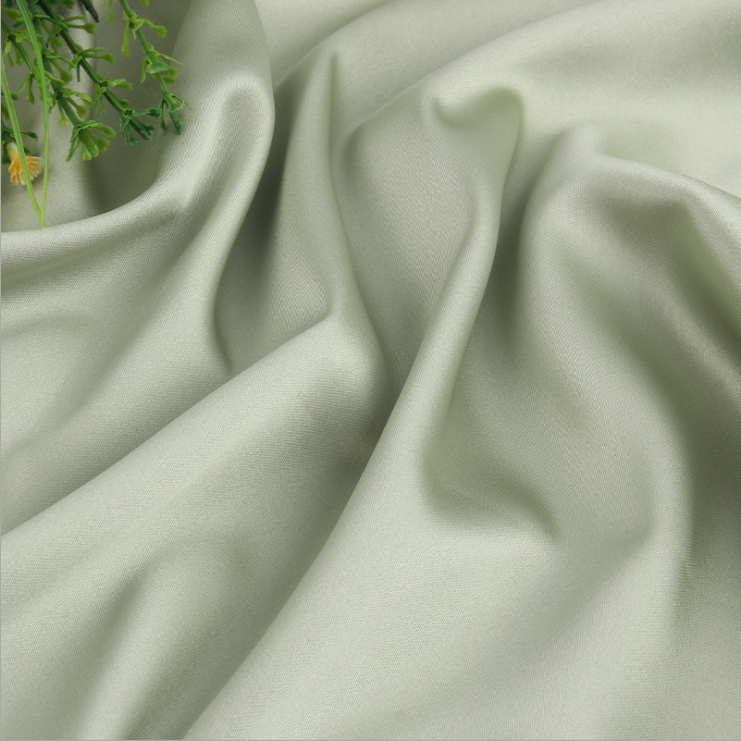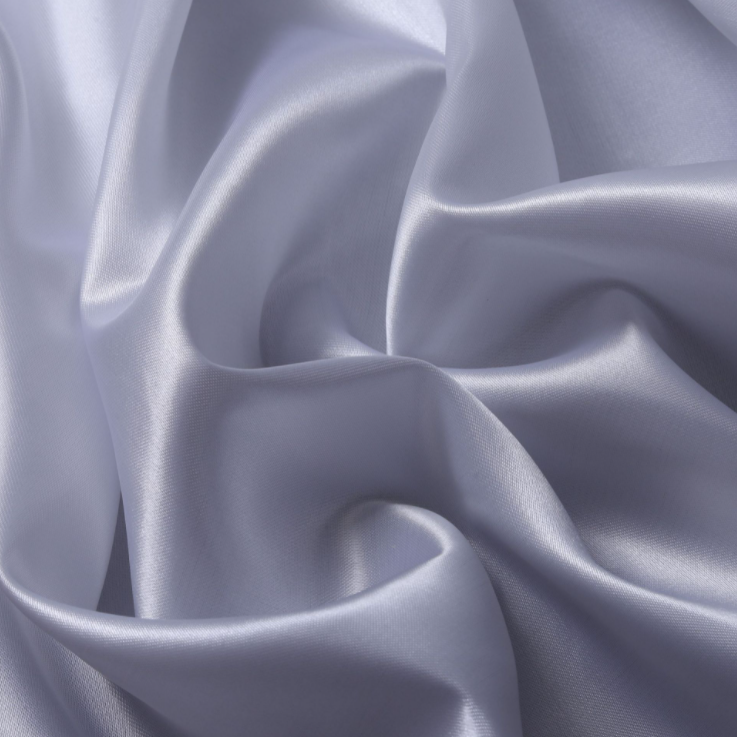Silk is a very prominent textile in the fashion industry, not only because of its rarity, also because silk has unparalleled comfort and skin-friendly properties of any other fabric, but due to its high price, more and more silk-like fabrics are appearing on the market. , These fabrics are close to silk in feel and vision, and the most important thing is that the price is much cheaper than silk.
Silk
Silk fabrics usually refer to silk fabrics that are woven from mulberry silk. After different processes methods, dyeing and printing, various kinds of silk fabrics are formed.
The varieties of silk fabrics are divided into 14 major categories and 43 subcategories. There are roughly silk habotai, taffeta, crepe de chine, heavy crepe, crinkle crepe, georgette, organza, double georgette, heavy georgette, brocade, jacquard satin, crepe satin, stretch crepe satin, knitted silk and other common species.
Pros:
Good hygroscopicity and permeability, so it is warm in winter and cool in summer;
Soft and skin-friendly, little friction with the human body;
Anti-ultraviolet, containing amino acids to keep the skin smooth and moisturizing;
Cons:
It is more troublesome to take care of and maintain, and it is not suitable for machine washing.

Cupro
Cupro is a new kind of rayon fabric, it is naturally more degradable and environmentally friendly regenerated cellulose extracted from pure natural plants fiber. To put it simply, its ingredients come from nature, and it uses high-quality wood pulp, which is green and environmentally friendly, and can also degrade by itself in the soil.
Because of the color of cupro after washing, it will be a little rustic and old-fashioned, so generally this kind of clothes is more recommended to buy retro literary styles, so that the more you wash it, the more charming it will be.
Cupro does not generate static electricity and is soft and breathable, so it is very good to use them as inner layers.
Pros:
The fabric is breathable and smooth, with soft luster;
It also has good hygroscopicity, commonly known as "breathing fabric", which is warm in winter and cool in summer;
Good antistatic and drapability;
Cons:
After washing, there will be normal shrinkage and color fading.

Acetate Fabric
Acetate fabric is a man-made fiber obtained by esterification with acetic acid and plants cellulose as raw materials. Its softness is comparable to that of natural fibers, and the lustrousness is comparable to that of man-made fibers. It has good drape and fit. It increases eye-catching without being too aggressive. It is light and shiny and can be matched in all seasons.
Acetate fabric is a pure semi-man-made fiber, manufacturing by using advanced textile technology, with bright colors and appearance.
Pros:
The touch is smooth and comfortable, and the luster and performance are close to those of mulberry silk;
Better moisture absorption, air permeability and resilience, no static electricity and hairballs;
Good dyeability and bright colors, superior to other cellulose fibers;
Cons:
The strength is not high, so avoid strong stretching when wearing such clothes.

Tencel
Tencel is a solvent-based cellulose fiber, derived from sustainable wood. It is non-toxic and non-polluting, and can be biodegraded after use without causing pollution to the environment. From the initial raw materials, to the final Tencel fabric made by dissolving, spinning, weaving and other processes.
Tencel fabric is really suitable for summer shirts. The thin and hazy semi-permeable texture is both fairy and cool.
Pros:
Soft and drapeable, breathable and skin-friendly;
Natural luster and smooth feel;
Tough and wear-resistant, and basically does not shrink;
Cons:
It is very easy to wrinkle after being machine washed and rubbed.

Satin is a kind of mixed artificial fabric, which is similar to silk in terms of feel and gloss. The satin fabric has a strong drape and has the suppleness and smoothness of silk. Polyester satin is the closest to silk satin. Polyester is a kind of petroleum-refined material. It is generally believed that this kind of fabric has a certain impact on the environment and has poor degradability. However, due to the application of recyclable polyester, many polyester fabrics are recycled from discarded plastics. It is also beneficial to the natural environment to a certain extent.
Pros:
Silk feel, durability, high wrinkle resistance
Cheaper price,
No shrinkage after washing, easy to use, anti-static.
Cons:
Poor breathability, the fabric will feel stuffy after wearing it






 English
English German
German French
French Russian
Russian Spanish
Spanish Japanese
Japanese Korean
Korean Portuguese
Portuguese Ukrainian
Ukrainian Arabic
Arabic Italian
Italian











Leave A Comment